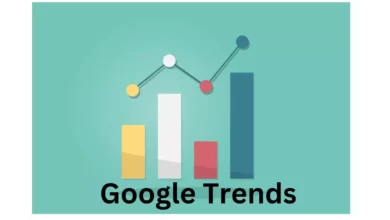Website Optimization Best Practices: From Keyword Research to Measuring Results

Website optimization is the process of improving various elements of your website in order to increase its visibility and attract more visitors.
Optimizing your website can help you reach a wider audience, leading to more conversions and revenue.
In this article, we will discuss various best practices and tips for optimizing your website, as well as examples and case studies of companies that have successfully implemented these strategies.
Understanding Website Optimization
Website optimization is the process of making changes to your website in order to improve its ranking in search engine results pages (SERPs).
There are two main types of website optimization: on-page and off-page optimization.
On-page optimization refers to changes made to the content and structure of your website, such as title tags, meta descriptions, header tags, and alt tags.
On-page optimization is important for making sure that both search engines and visitors easily understand your website.
Off-page optimization refers to changes made outside of your website that can affect its ranking, such as building backlinks from other websites.
Off-page optimization is important for increasing your website’s visibility and authority.
Keyword Research
Keyword research is the process of identifying the words and phrases that people are searching for in order to find websites like yours.
By targeting these keywords, you can increase your website’s visibility and attract more visitors.
There are various tools available for conducting keyword research, such as Google Keyword Planner and Ahrefs.
These tools can help you identify popular keywords in your industry and understand their search volume, competition, and potential for attracting visitors to your website.
It is important to also focus on long-tail keywords, which are more specific and less competitive than short-tail keywords.
For example, instead of targeting the keyword “shoes,” you could target the long-tail keyword “women’s running shoes.” Additionally, optimize your website also for semantic search.
Content Strategy
Having a solid content strategy in place is crucial for optimizing your website. Your content should be high-quality, informative, and easy to read and understand.
It should also be aligned with your business goals and target audience.
There are various types of content that you can create to optimize your websites, such as blog posts, infographics, and videos.
These types of content can help attract visitors and keep them engaged on your website.
On-Page Optimization
On-page optimization is important for making sure that both search engines and visitors easily understand your website.
Here are a few tips for optimizing the content on your website’s pages:
- Use title tags and meta descriptions to provide a clear and concise summary of what each page is about.
- Use header tags (H1, H2, etc.) to organize your content and make it easy to scan.
- Use alt tags to provide a text alternative for images, in case they can’t be loaded.
Link Building
Link building is an important aspect of off-page optimization. Backlinks are links from other websites that point to your website.
These links can help increase your website’s visibility and authority.
To build quality backlinks, you can reach out to other websites and request that they link to your content. Another way is to guest post on other websites and includes a link to your website in your bio.
However, it is important to keep in mind that quality is better than quantity. Avoid building links from low-quality or spammy websites, as these can harm your website’s reputation.
Link Building Benefits for Optimal SEO Results in 2023
Measuring and Analyzing Results
Tracking and analyzing your website’s performance is an important step in the optimization process.
By measuring and analyzing your website’s performance, you can understand which strategies are working and which need to be improved.
There are various tools available for tracking and analyzing your website’s performance, such as Google Analytics and SEMrush.
These tools can help you measure metrics such as website traffic, bounce rate, and conversion rate.
It’s also important to use A/B testing, also known as split testing, to compare different versions of your website and see which one performs better.
This can be done by creating two versions of a specific page on your website and then sending traffic to both versions to see which one performs better in terms of conversions or other key metrics.
Examples and Case Studies Of Website optimization
Here are a few examples and case studies of companies that have successfully implemented website optimization strategies:
- Airbnb: Airbnb optimized its website by making it more user-friendly and easy to navigate. This resulted in a 25% increase in booking conversions.
- Netflix: Netflix optimized its website by using A/B testing to experiment with different layouts, headlines, and images. This resulted in a 12% increase in sign-ups.
- Neil Patel: Neil Patel’s website, QuickSprout, was able to increase its traffic by 220% in just two months by implementing a content marketing strategy and conducting extensive keyword research.
Additional Resources
Here are a few additional resources for learning more about website optimization:
- The Beginner’s Guide to SEO by Moz
- SEO for Dummies by Peter Kent
- The Art of SEO by Eric Enge, Jason Baumgartner, and Jessie Stricchiola
- Website Optimization by Andrew B. King
- Landing Page Optimization by Tim Ash
Website optimization is an ongoing process, and it’s important to stay up-to-date on the latest best practices and trends. By following the tips and strategies outlined in this article, you can improve the visibility and performance of your website and ultimately drive more traffic and revenue.




